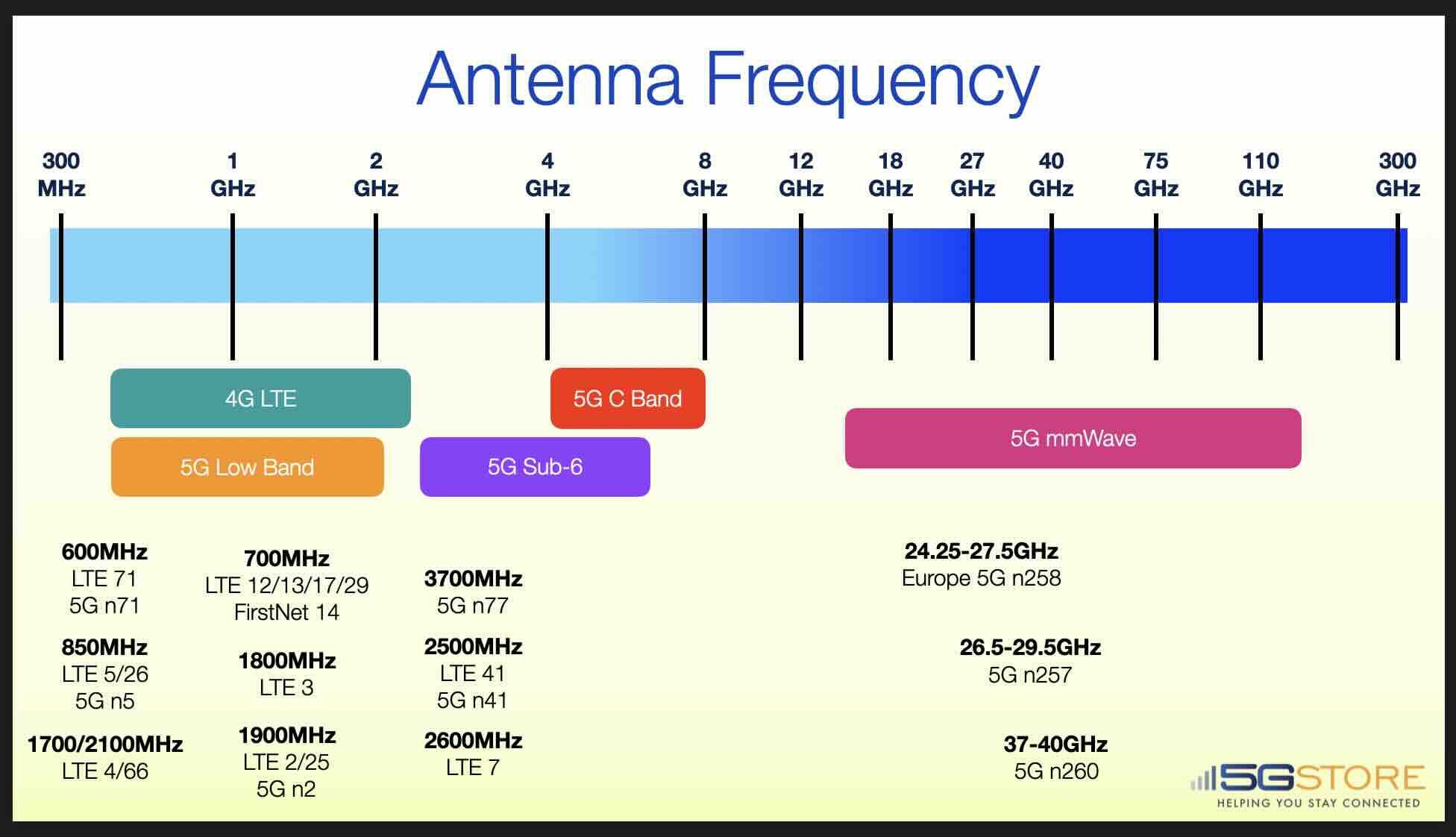


Antennas play a critical role in the transmission and reception of cellular signals. They are designed to emit or receive electromagnetic waves, which carry information such as voice, data, and video, over the air. In the case of cellular networks, antennas are used to communicate between the mobile devices and the base stations. When you make a call or send a message on your smartphone, your device sends the signal to the nearest base station via an antenna, which then relays the signal to its destination.
But what about antenna frequencies? How do they impact cellular communication?
LTE (Long-Term Evolution) and 5G (5th Generation) cellular frequencies are used for wireless communication over cellular networks. LTE and 5G use various frequency bands depending on the region and the cellular operator. Generally speaking, LTE uses lower frequencies than 5G. Some are similar however, but are expanded to include additional frequency ranges (e.g. LTE Band 71 and 5G Band 71). It's important to note that frequency bands used by LTE and 5G vary between countries and network operators.
The use of different frequency bands can impact the speed, coverage, and penetration of wireless signals. Higher frequency bands can provide faster data speeds and lower latency, but they may have lower coverage and penetration compared to lower frequency bands. This is why it's important to choose the right antenna frequency for your specific use case. Whether you're building a cellular network, designing a wireless device, or simply trying to improve the signal quality on your smartphone or modem, understanding antenna frequencies is essential.
At 5Gstore.com, we specialize in providing high-quality antennas for cellular networks, WiFi, and GPS. Our antennas are designed to meet the specific needs of your project, whether you're looking for a low-cost solution for a small deployment or a high-performance antenna for a large-scale network.
5G band n5 is used specifically for 5G New Radio (NR) networks. It operates on a frequency range of 824-849 MHz for the uplink (mobile device to base station) and 869-894 MHz for the downlink (base station to mobile device).
5G band n5 is primarily used in North America, where it was originally allocated for use by AT&T in certain areas of the United States.
One of the advantages of 5G band n5 is its ability to provide good coverage over a wide area. Its lower frequency range allows it to penetrate obstacles such as buildings and trees more easily than higher frequency bands, which can improve network coverage and reliability.
However, 5G band n5 may not offer the same high data transfer speeds as higher frequency bands like 5G band n41, which can limit its suitability for applications like video streaming and online gaming. It also may not be as widely available as higher frequency bands, as it is less commonly used globally for 5G networks.